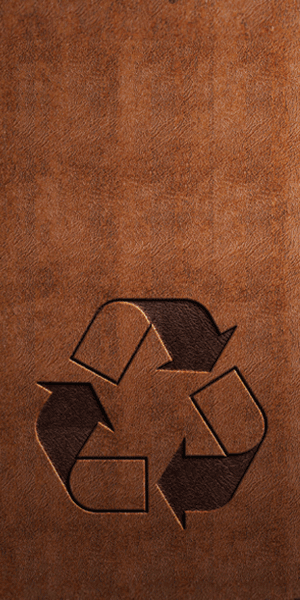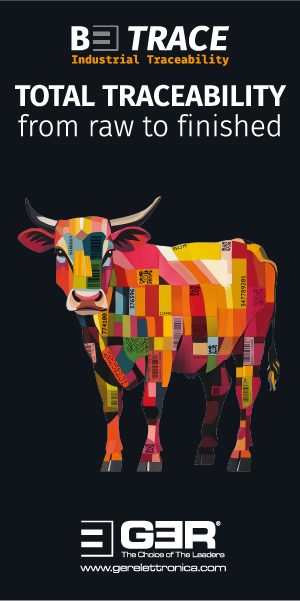Market Intelligence—04.03.25
You were probably all very excited about the outcome of the Lineapelle fair in Milan (February 25-27), and so were we. It remains the event that deals most intensively with leather as a product. It is not a trade fair for the mass market, but it remains the epicentre of what can be done with the raw material and what diverse results can be achieved. Nowhere else is there such a complete presentation of the combination of technical properties and performance and fashionable variety, elegance and beauty. It is no coincidence that this trade fair takes place in Italy, because nowhere else is there such a close connection between the production of leather and its use, even if French names have a high profile as well.
A visit to Lineapelle must be seen in this light and less from the point of view of business and sales in the mass markets. Anyone travelling to Milan with these expectations and thoughts in mind will never be disappointed, and that was also true this time.
From lunchtime on the first day, the aisles and stands were relatively well filled and everyone from the established exhibitors reported an intensive first day with good-quality visitors. There was perhaps a lack of new customers, but the established customers were there and immediately used the first day for the important discussions that had to be held with their leather suppliers.
Day two was the day with the highest number of visitors, from late morning to early afternoon. Before and after, the aisles were not particularly well filled, but this is less important than the question of whether you can meet the business partners you came to Italy to meet. If positive chance meetings are added to this, then everyone will have a good impression of their trade fair visit. Day three was like at all fairs. Exhibitors still attend their stands, but the number of visitors is very manageable.
In the classic definition, trade fairs are there to showcase new products and attract new customers. That was certainly also the function of leather trade fairs in the past. Today it is perhaps more about hope; new customers are more the exception today. Leather is not a growing market at the moment, there are hardly any manufacturers who previously used other materials and now want to use leather instead or in addition. Of course, there are always one or two small players who are looking for something different and special and then use the trade fair to source the materials they need. However, the big business, the big new customer, is no longer to be found at leather trade fairs these days.
So, the fair is about enabling leather users to find as many suppliers and business contacts as possible in one place. For the exhibitors, the same applies the other way round: they can meet several customers in a few days. For many companies, it is also an opportunity to give employees the chance to get a better overview of the world of leather outside the office or production area. In addition, human contacts and a day or two in Milan are certainly a form of recognition of employees’ work that should not be underestimated.
There have been no revolutions in the development of new types of leather for a long time now, which is why the focus is increasingly on the evolution of most articles. Colours, feel and, sometimes, improved technical properties dominate the ranges.
In Halls 13 and 15, which are particularly characterised by the Italian leather manufacturers and their international colleagues, who produce special, elegant and therefore also higher-priced leathers with higher added value, it was very easy to see how the fashionable European leather industry is doing at the moment.
All you really need to know is which fashion and luxury brands are still successful worldwide at the moment, then the trail is immediately laid to the well-attended trade fair stands. Those tanners who are associated with these brands must have been very satisfied with the outcome of the trade fair, the quality of their visitors and their numbers. It is doubtful whether everything conversation at these stands centred on new orders. You do not need a trade fair for these supply chains, because they are discussed in other places. Stable relationships, which are now based on trust and quality and have proven themselves, also have no worries about orders.
For others, however, the situation is worse, which is why the gap between successful and less successful companies has become wider than ever. If you then remember that new business relationships are not really being sought at the moment, things are difficult for those who are currently serving less successful customers.
Of course, there are always exceptions. Without naming names, there are still individual brands that are increasingly focusing on leather and therefore need additional suppliers if their standard suppliers are unable to support their growth. When these names knock on several doors, it sometimes gives the impression that the overall interest seems better than it actually is.
In recent years, the supply of raw materials has always been the least of leather manufacturers’ problems. Almost everything was available in sufficient quantities, even if there was of course an abundance of some things and only just enough of others to cover demand. The problem is that even in the specialised markets, monocultures have formed in production and in the use of raw materials. Everything should be standardised, everything should be traceable and be the same. This very quickly leads to bottlenecks for one or two items when supply declines. The raw material supplier is happy, but it can quickly become an unsolvable problem for tanners if they don’t want or are not allowed to use alternatives. There are many indications that this could become a problem in some niches and high-value, specialised markets, for which no one is really prepared.
Of course, this sounds paradoxical when you think about the fact that there is an abundance of raw materials. Some think about leather production backwards and downstream and not creatively from the raw material. If you want to determine what comes out in the end instead of making intelligent use of what is available, it is a challenge. The industry has made things difficult for itself with all its standards and certifications, and when you combine this with European politics and regulations in particular, you cannot really dispel the concerns.
To summarise, however, we did not leave the trade fair depressed and without hope. We do not expect the great resurrection of leather as a material in the near future. But if politics in Europe and the geopolitical situation do not throw a spanner in the works, then, in principle, there is no reason to assume that the situation will not slowly improve in the course of 2025. There will never be enough for everyone; and our concerns about the structural problems in the European leather industry, which we have repeatedly voiced in recent months, remain. This is all the more painful as there is a great deal of potential for leather in the consumer goods markets.
The split market is currently suffering from bottlenecks in many sectors. On the one hand, this is of course due to reduced leather production in Europe, but on the other hand it is also due to isolated successes with certain products. The market for proteins also plays a not insignificant role here and, overall, a sensible balance has simply not yet been found. In China, there is currently talk of falling prices for lime splits, which cannot really be explained.
There were some interesting new developments in sheepskins at Lineapelle. For some time now, it has been apparent that certain lambskins are in high demand. Small, fine-wool and lightweight materials are in demand and prices have risen significantly over the past months. The demand for finished articles that are very short shorn, very fine, light and densely woollen are sought after and are also used by specific brands for high-quality, expensive end products. At the same time, other skins find almost no buyers at any price. The same applies here too: if these fashionable monocultures did not dominate, if people were more flexible and tolerant with regard to specifications, there would be many more skins to use. To be honest, there is still the hope that if the product catches on with consumers and is in demand, we could then also think about expanding the range of consumer goods. As we all know, hope always dies last.
After the fashionable and special leathers that we saw in Milan, we are travelling to Hong Kong next week. And while last week was dominated by quality and creativity, next week the big questions will be asked about volume production. Many raw material suppliers are already travelling and visiting their major customers in Asia. We will see what impressions they bring back with them and what their customers have dictated in their order books. In this sector and this part of the world, geopolitical issues, including customs duties, will play a much greater role.
For several weeks now, we have seen caution and again in China that the great reluctance to invest is due not only to general economic problems but also to uncertainty surrounding future political decisions. There are many indications that the Chinese government will continue its massive efforts to support local consumption. The central committee will be meeting shortly to discuss and approve the next five-year plan and a careful study of what is published there always provides very reliable insights into what can be expected in China in the near future. In a fortnight’s time, we will definitely know a little more about the expectations of the leather industry.












